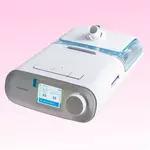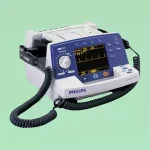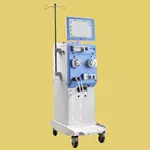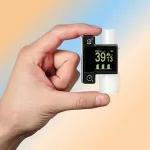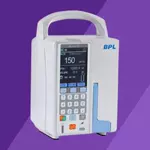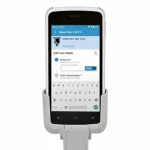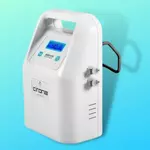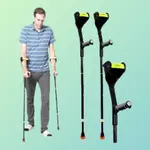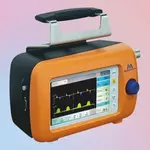Blog
Sudden Cardiac Arrest- Symptoms, Causes, Equipment
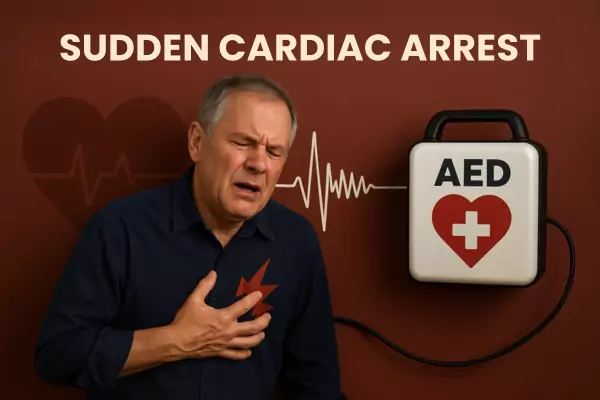
Sudden Cardiac Arrest (SCA)
Sudden cardiac arrest (SCA) is a condition in which the heart suddenly stops beating. When that happens, blood stops flowing to the brain and other vital organs. If it is not treated, SCA usually causes death within minutes.
Causes of SCA:
The causes of Sudden Cardiac Arrest (SCA) can vary, but the most common and serious ones are related to problems with the heart’s electrical system. Here’s a breakdown:
Coronary Artery Disease (CAD)
The most common cause of SCA. Occurs when arteries supplying blood to the heart become narrowed or blocked, often leading to heart attacks, which can trigger arrhythmias.Heart Attack (Myocardial Infarction)
A heart attack can damage the heart muscle and disrupt its electrical system, increasing the risk of SCA.Cardiomyopathy
A disease of the heart muscle that can cause it to become enlarged, thickened, or stiff, increasing the chance of dangerous arrhythmias.Arrhythmias (Abnormal Heart Rhythms)
Ventricular fibrillation (the most common rhythm leading to SCA). Other arrhythmias, like ventricular tachycardia, can also lead to SCA.Congenital Heart Disease
Structural or electrical abnormalities present from birth can cause SCA, especially in young people.Heart Failure
Weak heart function increases the risk of lethal arrhythmias.Valvular Heart Disease
Diseased heart valves can lead to changes in heart size and structure, which can cause arrhythmias.Electrical Abnormalities
Conditions like Long QT Syndrome, Brugada Syndrome, Wolff–Parkinson–White Syndrome.Commotio Cordis
Sudden impact to the chest (commonly seen in sports) can trigger cardiac arrest, even in healthy individuals.Drug Abuse or Medication Side Effects
Cocaine, amphetamines, and some prescription drugs can cause arrhythmias leading to SCA.Severe Electrolyte Imbalances
Abnormal potassium, magnesium, or calcium levels can disrupt the heart’s rhythm.
What happens during SCA?
1. The heart’s electrical signal fails
Your heart has an electrical system that controls how it beats. In SCA, this system suddenly goes wrong. The most common issue is ventricular fibrillation, where the heart quivers instead of pumping.
2. The heart stops beating properly
Because of the electrical failure:
The heart stops pumping blood
Blood no longer flows to the brain, lungs, and other vital organs
3. The person collapses instantly
Within seconds, the person:
Loses consciousness
Stops breathing
Has no pulse
May fall to the ground suddenly
Might gasp briefly or shake (like a seizure) before going still
4. The brain begins to shut down
The brain can only survive for about 4 to 6 minutes without oxygen before damage begins. Without help:
Permanent brain damage can occur in minutes
Death can happen within 8 to 10 minutes
5. Emergency response is critical
The only way to survive SCA is immediate help:
Call emergency services
Start CPR (chest compressions) immediately to keep blood moving
If available, use an AED (defibrillator) to shock the heart back to a normal rhythm
Difference Between Sudden Cardiac Arrest and Heart Attack
Category – What it is
Heart Attack: A circulation problem—blood flow to part of the heart is blocked, causing heart muscle damage.
Sudden Cardiac Arrest: An electrical problem—the heart suddenly stops beating due to abnormal heart rhythms (like ventricular fibrillation).
Category – Main cause
Heart Attack: Blocked artery due to a blood clot or plaque buildup.
Sudden Cardiac Arrest: A problem with the heart’s electrical system, often due to an arrhythmia.
Category – How it starts
Heart Attack: Usually starts slowly with warning signs like chest pain or discomfort.
Sudden Cardiac Arrest: Happens suddenly and without warning. Collapse within seconds.
Category – Pulse and breathing
Heart Attack: Pulse is usually present; breathing may be shallow or labored.
Sudden Cardiac Arrest: No pulse and no normal breathing.
Category – Time to respond
Heart Attack: You usually have minutes to hours to get treatment.
Sudden Cardiac Arrest: You have only minutes. Brain damage starts in 4–6 minutes; death in 8–10 minutes if no CPR or shock.
Category – Treatment
Heart Attack: Medications (e.g., aspirin, clot busters), angioplasty/stent, bypass surgery, oxygen and monitoring.
Sudden Cardiac Arrest: CPR (manual chest compressions), defibrillation to restart the heart rhythm, advanced life support.
Category – Long-term effects
Heart Attack: May need lifelong medication, lifestyle changes, and rehab; some damage may remain.
Sudden Cardiac Arrest: If revived, may need an implantable defibrillator (ICD); brain or organ damage is possible if help is delayed.
Category – Who is at risk?
Heart Attack: High blood pressure/cholesterol, smokers, diabetics, family history, sedentary lifestyle.
Sudden Cardiac Arrest: Heart disease, weak heart muscle (cardiomyopathy), family history of SCA, athletes with hidden heart problems; sometimes no prior symptoms.
Category – First thing to do
Heart Attack: Call the emergency number (e.g., 911 in Canada). Help the person sit or lie down comfortably. Stay calm and talk to them to reduce panic. If available and they’re not allergic, give one aspirin to chew slowly. Do not let them walk or move around.
Sudden Cardiac Arrest: Call for help, start CPR immediately, use an AED if available. Don’t delay.
Category – Symptoms
Heart Attack: Chest pain or pressure; pain in arms, neck, jaw, or back; shortness of breath; nausea/cold sweat; dizziness or lightheadedness.
Sudden Cardiac Arrest: Sudden collapse; no pulse; no breathing; loss of consciousness; may gasp once or twice, then silence.
Equipment Used for Sudden Cardiac Arrest (SCA)
Automated External Defibrillator (AED)
Primary life-saving device
Delivers an electric shock to restore normal rhythm
Designed for public use with voice and visual prompts
Often found in airports, malls, gyms, schools, and workplaces
Defibrillator
Used by trained medical personnel (paramedics, doctors, ICU staff)
Allows precise control of energy delivery and rhythm monitoring
Common in ambulances, emergency rooms, and hospitals
Cardiopulmonary Resuscitation (CPR) Equipment
Includes:
CPR boards (hard surface for effective compressions)
Bag-valve mask (BVM) for assisted ventilation
Automated chest compression devices (e.g., LUCAS, AutoPulse)
Supports blood flow until defibrillation or advanced care is provided.
Electrocardiogram (ECG) Monitor
Continuously monitors the heart’s rhythm
Detects arrhythmias like ventricular fibrillation or ventricular tachycardia
Used in ambulances, emergency rooms, and during post-resuscitation care
Airway Management Devices
Devices to keep the airway open and support breathing:
Oropharyngeal airways
Nasopharyngeal airways
Endotracheal tubes
Laryngeal mask airways (LMAs)
Post-Resuscitation Care Equipment
Mechanical ventilators (breathing support)
Infusion pumps (to administer medications)
Cooling devices for targeted temperature management (therapeutic hypothermia)
Emergency Drugs
Commonly included on crash carts and ACLS kits:
Epinephrine (adrenaline)
Amiodarone
Lidocaine
Magnesium sulfate
Atropine
Sudden Cardiac Arrest (SCA) Incidence
Sudden Cardiac Arrest (SCA) is the sudden stopping of the heart, leading to immediate loss of blood flow to vital organs. If not treated within minutes, it can result in Sudden Cardiac Death (SCD), which is defined as death occurring within an hour of symptom onset or within 24 hours of last being seen healthy.
SCD is often linked to cardiovascular diseases and may sometimes be the first sign of underlying heart issues.
Men and older adults are at higher risk; rates increase with age.
Coronary artery disease (CAD) causes a large majority of SCD cases in developed countries.
Early diagnosis and treatment of CAD and cardiovascular risk factors can prevent many SCD cases.
CPR and defibrillation are critical in improving survival if SCA is witnessed.
For younger individuals with inherited arrhythmias, implantable cardioverter-defibrillators (ICDs) can help prevent SCD.
The heart’s structure and conduction system are essential for maintaining proper rhythm and blood flow; disruptions can cause fatal arrhythmias and SCA.
FAQS About SCA
Can a person experience multiple SCA events?
Yes. If the underlying cause is not treated or controlled, a person can suffer multiple SCA episodes. Implantable defibrillators are often recommended.What is the survival rate for SCA?
Survival rates are low, especially outside of hospitals—typically less than 10% without immediate CPR or defibrillation.What should you do if someone suffers from SCA?
Call emergency services immediately, start CPR, and use an Automated External Defibrillator (AED) if available.Can young people suffer from SCA?
Yes. Young individuals with inherited heart conditions are also at risk, though it is less common than in older adults.How can SCA be prevented?
Early detection and management of heart disease
Lifestyle changes to control risk factors like diabetes and hypertension
Use of implantable cardioverter–defibrillators (ICDs) in high-risk individuals
CPR training and having defibrillators available in public spaces
Can Sudden Cardiac Arrest happen during sleep?
Yes. SCA can occur at rest or during sleep, especially in individuals with sleep apnea, undiagnosed arrhythmias, or severe heart disease.

